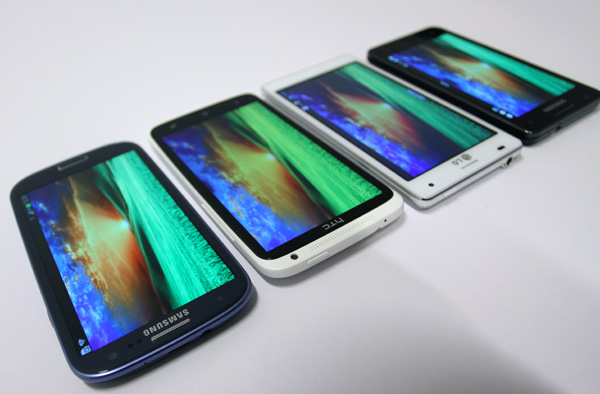Index

Review: Great, but not without its issues
Samsung’s Galaxy series has come a long way over the past two years. Back in 2010 Samsung introduced the original Galaxy S, which also became the basis for the Nexus S. Last year the company rolled out the very successful S II, with a bigger 4.3-inch screen and a dual-core Exynos chip. It was Samsung’s best phone to date and it won the hearts of millions, making it probably the most popular Android phone of all time.
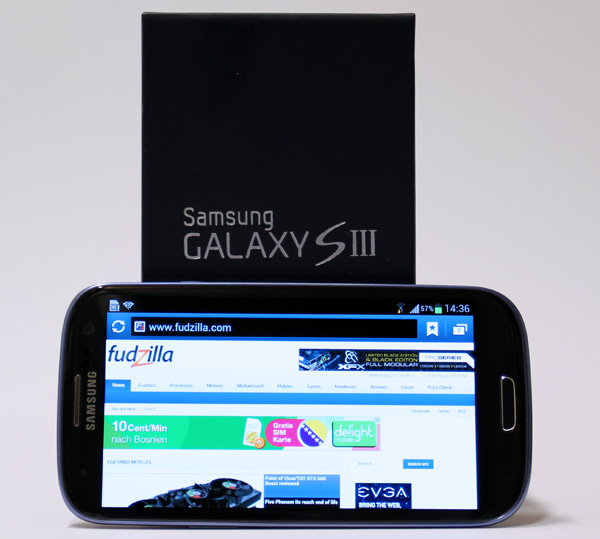
So, expectations for the third iteration of this phone were very high and speculation was rampant, resulting in some outlandish and amusing rumours. In the end we ended up with a 4.8-inch phone with a Super AMOLED capacitive touchscreen under a layer of Gorilla Glass 2. The resolution is 1280x720 pixels, which translates into 306 pixels per inch. Pentile Super AMOLED is something that we’ve already seen on the Galaxy Nexus and to be honest it’s not as good as Super LCD used in the HTC One X. In some respects Super AMOLED comes out on top, but this is a matter of personal preference and let’s leave it at that.
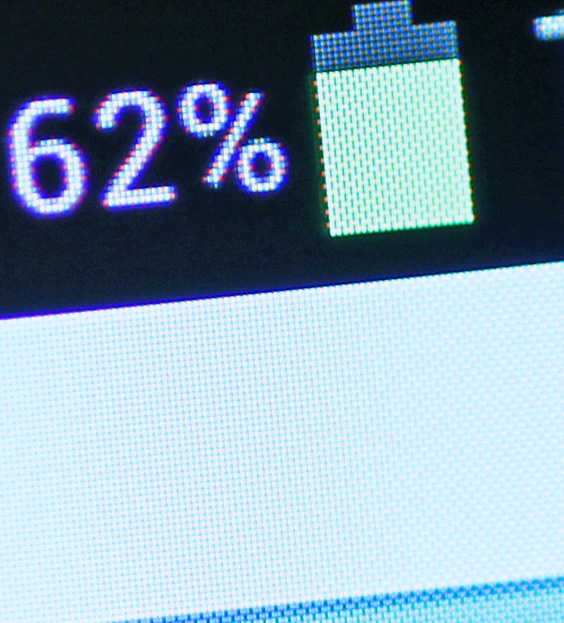
The phone measures 136.6 x 70.6 x 8.6 mm and weighs 133 grams and despite the larger screen it does not feel much bigger than its predecessor, in part thanks to the curved design. It comes with 16GB memory, but 32GB and 64GB versions should be available at some point. With the 16GB users end up with about 12GB at their disposal and many will like the fact that this phone has a microSD slot. Samsung also offers 50GB of Dropbox storage, something that consumers will appreciate. Basically when it comes to storage options, the S III is hands down the winner in the 720p superphone market.
The phone is equipped with an 8-megapixel camera capable of delivering 3264x2448 shots. It is an autofocus camera, with LED flash and it’s capable of 1080p video at 30FPS. The camera will let you take HD videos and pictures at the same time, which is nice. HDR functionality is on board, too, The front camera has a 1.9-megapixel sensor capable of 720p at 30FPS which is quite good for a front facing camera. Image quality is surprisingly good and will be great for Facebook self-portraits or video chat.
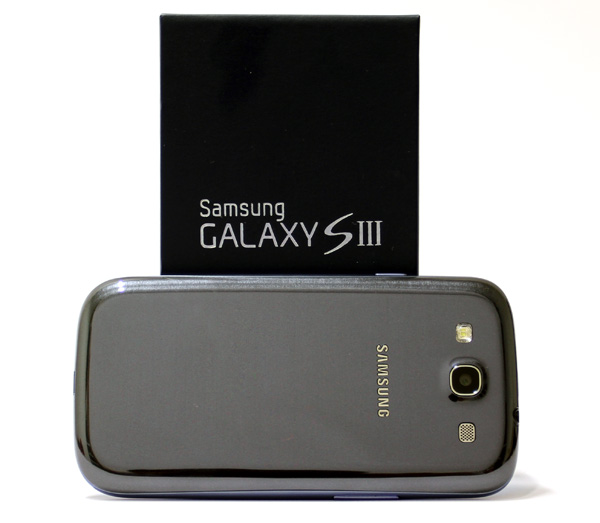
At present time the S III ships with Android 4.0.4 that works just fine and on top of it, you’ve guessed it, TouchWiz UI that is designed to match the phone’s color, in our case Pebble Blue. The other option is to get this phone in white and other colour options are reportedly on the way.
A removable battery is also something that many missed with the HTC One X and it packs quite a punch, as it is capable of storing 2100mAh of juice. The processor behind this beast is Samsung’s 32nm Exynos 4412 quad-core at 1.4GHz that can drop to 200MHz. It turns out that the processor is very efficient and coupled with a large power pack, battery life is impressive. The graphics core integrated in this SoC is ARM’s Mali 400MP4 and you will see how well it did in our benches.
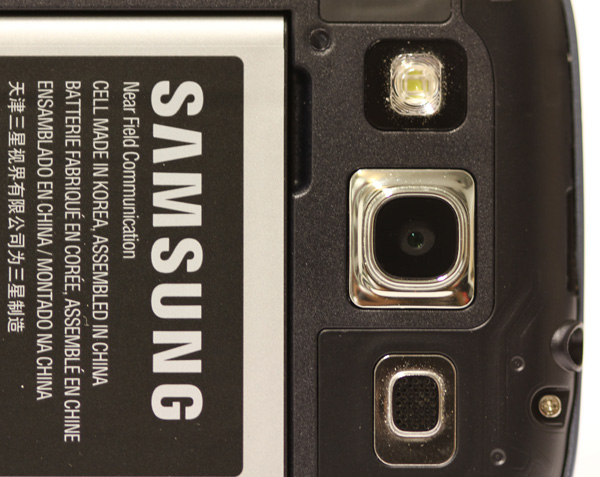
The usual array of sensors, including an accelerometer, gyro, proximity sensor, compass, barometer are also part of the phone and the phone comes with some quite useful motion sensor tricks. Active noise cancelation is also present with the help of a dedicated microphone, but to be honest we didn’t find it give the S III much of an edge over other high-end phones we used. TV-out is possible but only via MHL A/V link. The box contains the phone, earbud headset and a charger, no unnecessary gimmicks here.
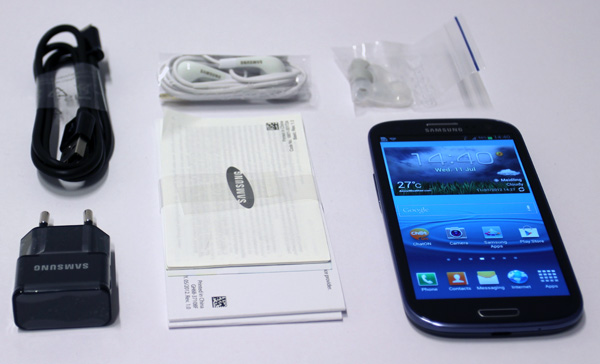
First Impression
In terms of design, the phone is dominated by the spacious 4.8-inch screen, speaker, tiny light and proximity sensors, a 1.9-megapixel front camera as well as quite large home button.
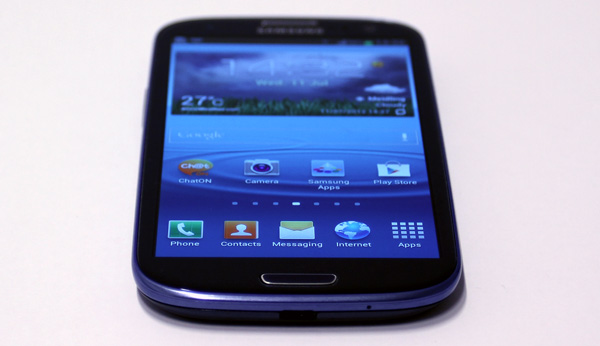
Samsung placed the back and settings buttons next to the home button, which is pretty much the company’s standard layout. The back side features a speaker, camera with LED flash and of course, a Samsung logo. The bottom of the phone hides a bog standard micro USB port, while the 3.5mm audio jack is located at the top.

The traditional Samsung layout continues on the sides. The power/lock button is on the right hand side and the volume rocker on the left. There is no dedicated camera button.

At its launch event Samsung told the world that the Galaxy S3 was inspired by pebbles, water and natural design and it tells the story with interactive live wallpapers that with water ripple effects accompanied by sound. Some will like it, others will not. The shape of the phone really reminds us of the Galaxy Nexus with a somewhat flimsier cover.
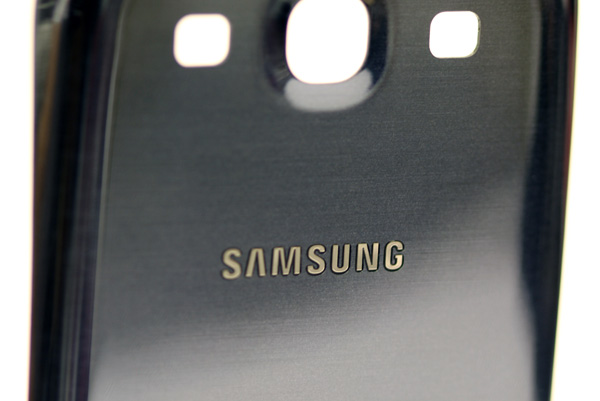
The back cover mechanism is very similar to the one used on the Galaxy Nexus and we cannot resist saying that the back of the back cover feels really cheap, especially for such a pricey device.
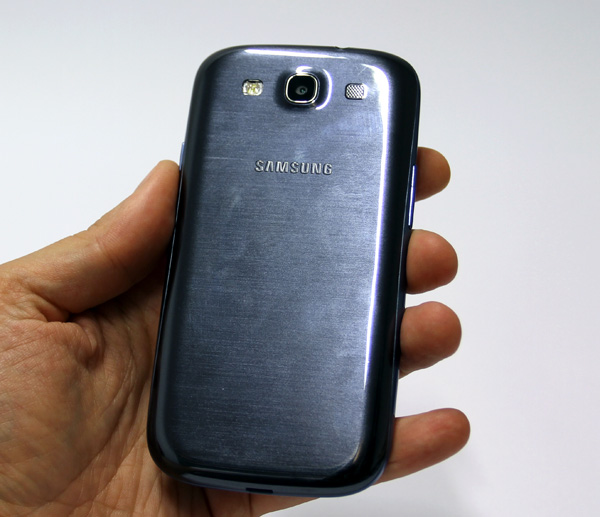
Greasy smudges will appear as soon as you lay your hands on it, especially in the freakish hot weather experienced around the world this summer. The plastic itself feels cheap and it is actually significantly worse than the Galaxy 2, which is really surprising.
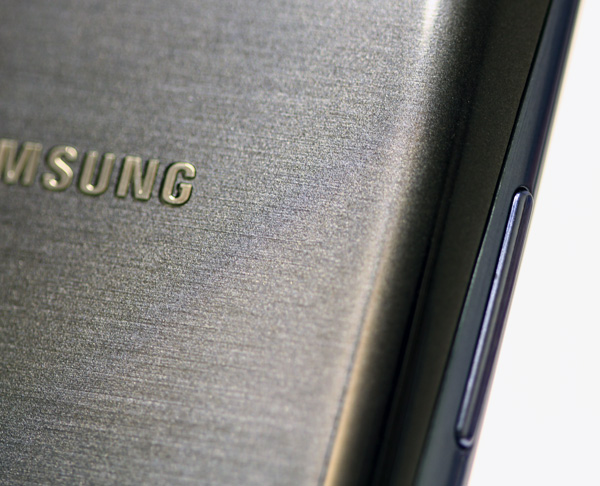
The Pebble Blue color looks nice on this phone and if you love jeans, it’s probably a better choice than the white one, but once again this is a matter of personal preference. In any case the design is great, the phone looks a lot sleeker than its predecessor and the only letdown is the flimsy battery cover.

User interface, software
At first startup the Galaxy S III kindly asks you to set up a Samsung account that can actually backup Logs, SMS, MMS and settings which can come handy. Once you finish that you are asked to set up the usual Google Play routine like with any other Android phone. Each confirmation is followed by a quite annoying digital water drop sound, but we are sure that once you finish, you can turn it off. Like we said, some will like this sound and ripple effect. [You obviously didn't. Ed]
After the Google Play setup dance, the wizard asks you to claim you 50GB Dropbox account that will be yours for two years, or until the Galaxy S5 comes out. Just like HTC with its One series, Samsung also included a guide for its TouchWiz interface that will tell you how to use your phone, e.g. swipe your finger across the screen to unlock your phone, swipe to the left of right to switch between home screens. This guide is probably meant for first time Android users as these features are common across the Android world.
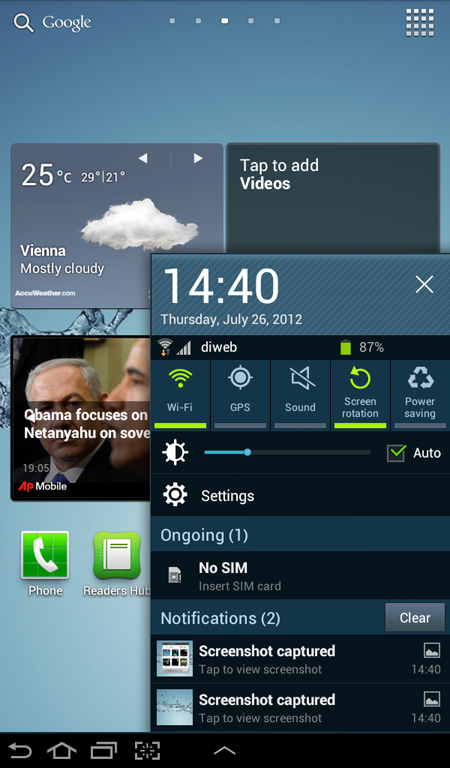
After setting up the phone, we were asked to do a 21MB update that installed fairly quickly and optimized the whopping 63 preinstalled applications that come with this phone. The update brings Android 4.0.4 to the phone and when we were finishing this article we got a notification that 63MB update was available that took a bit more to install, but we could not notice any major changes. The update was apparently supposed to bring stability, but so far we didn’t get experience and stability issues out of the ordinary even without the update. There is still no exact date for the Jelly Bean 4.1 update for this phone, but we probably won’t have to wait long for it.
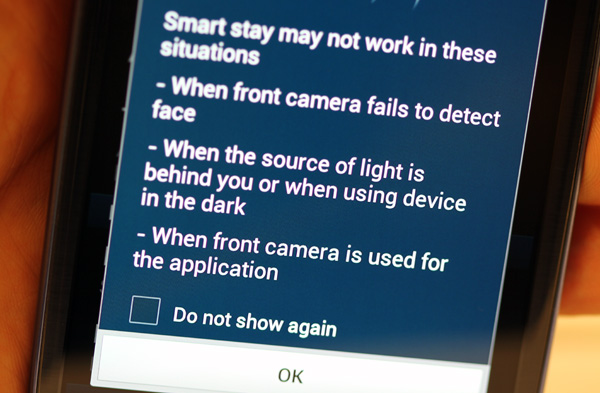
What makes this phone stand out from the rest of the crowd are a few innovative sensor applications that we haven’t seen on previous smartphones. The Galaxy S III can turn off the screen when you are not looking at it (in case it recognize your face), smart alert will notify you about missed calls or notification once you pick up your phone, double tap will get you on top of the list, you can tilt your phone to zoom, pan to move icon or browse images. You can also shake the phone to update, turn over to mute or pause. We also liked the fact that you can swipe in front of the front camera from right to left to take a screenshot and palm touch to move or pause the phone. Samsung came up with a few very clever tricks to make your life easier, so kudos to the engineers.

And now for a small digression. It took us a while to figure out why the browser looked rather dark compared to to HTC One X, Optimus 4X or even the old Galaxy S II. The answer is simple, the browser has its own brightness settings independent from the rest of the phone. This is a nice trick that will save you some battery and trick you into using auto brigtness while browsing.
The phone is really quick and the snappy Exynos quad-core definitely makes it one the fastest on the market. It boots fast, it reboots just as fast and it’s generally very fast in normal everyday tasks like browsing the internet. Phone calls will work as expected, Skype or Viber will work well too, but will get the phone hotter due the extensive CPU use.
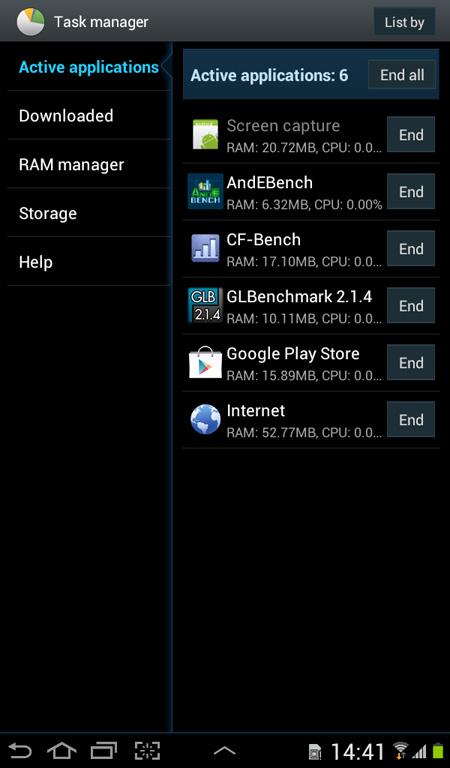
The CPU clock varies from 200MHz all the way to 1400MHz when necessary and with the 2100mAh battery this got us to two to three days of battery life. Three day battery life is without mail and Facebook synching, which is probably not a realistic scenario for most users, but two days should be possible for many casual users. Hard core users have to know that display with high brightness will kill the battery in 8 to 10 hours deepening on the task you are performing, naturally if it’s always on.
Games like Shadowgun will get the phone battery to 40 or more Celsius 104 Fahrenheit which is roughly as much as Tegra 3 phones in similar circumstances. Extensive gaming and demanding games with a lot of eye candy might get your phone even hotter, but since the CPU is at the lower part of the phone, you will be able to feel it. The CPU on the HTC One X and LG Optimus 4X is located beneath the camera. The general conclusion is that all quad-core phones with high-end games get very hot, no exceptions.
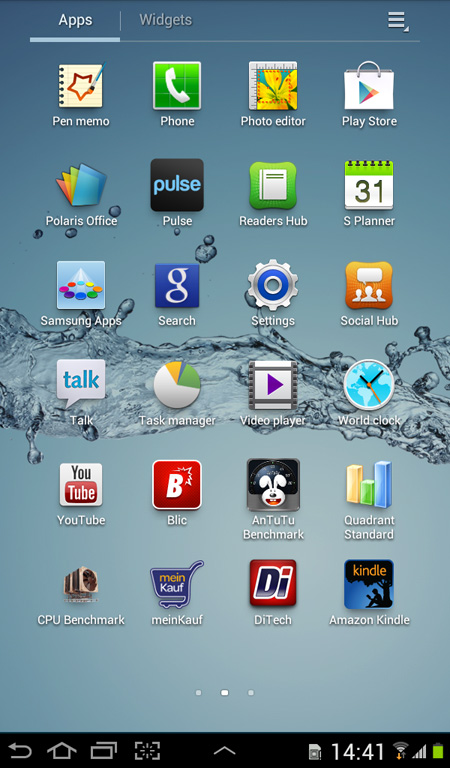
The app drawer is pretty close to plain ICS, apart from a few additional options and the placement of the status bar. On a separate note, I would really like to meet the developer who thought that it would be a good idea to name an app designed specifically for the Austrian market “MeinKauf.”
Samsung ships the phone with a lot of bloatware, including Chat on, All share play, game hub, HRS hotels, S Memos, S Planner, S Suggest and Samsung Apps, but most notable one that we spent some time with is S Voice, Samsung’s attempt to take on Siri.
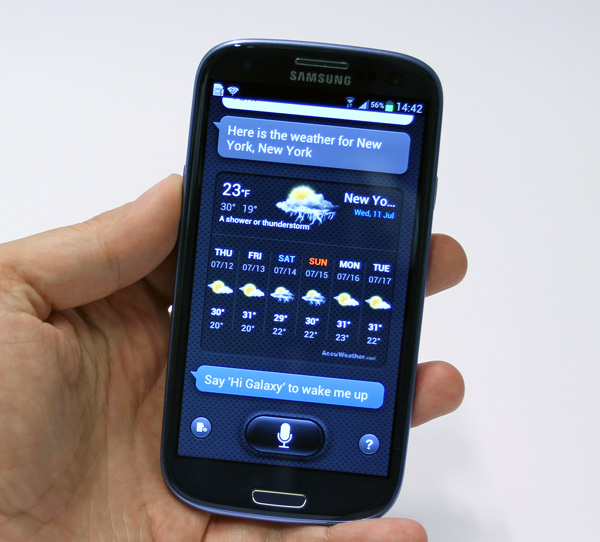
Samsung sees itself as an equal of Apple, and ever since Apple came with Siri, Samsung wanted to create its own competitor. The application eventually came to market as S Voice and it offered Siri-like functionality. S Voice would have made sense had Google not incorporated a vastly superior voice search engine in Android 4.1, which is not only better than S Voice, but Siri as well. To be fair, S Voice will answer some basic questions and more importantly it understands a few different languages. It was able to tell me the weather in German, Italian, as well as English. This is not bad as I am not native to any of these languages. Waking up S Voice in Italian stats with Ciao Galaxy, German is Hallo Galaxy and English Hello Galaxy. S Voice is a nice toy that you might even end up using at some point, but like Siri, only the most persistent will use it all the time.
There are a few downsides. S Voice was rather slow in coming up with answers. In addition, after a long search on the Samsung servers you will get "I didn’t catch that please try again” way too often. When we politely inquired about the wingspan of an African swallow, like Nermin in his Android 4.1 review here, this is what we got.
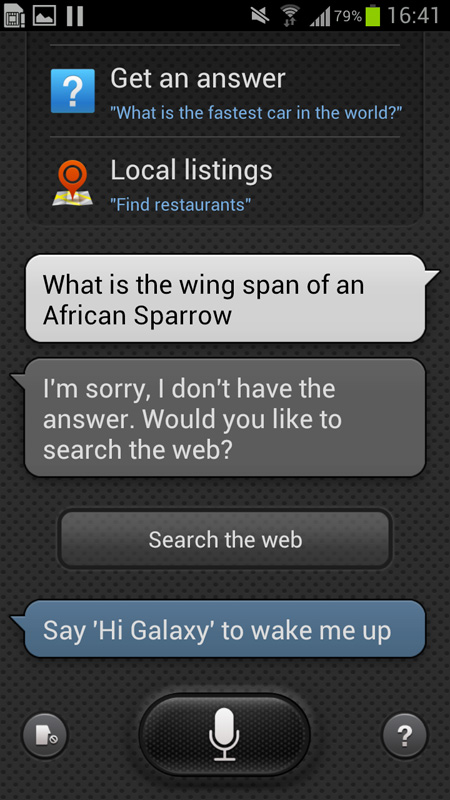
Some simple things like setting a task to hire John or meeting with Peter at 6 PM would work, but sometimes it would take way too long to process. If you have friends with non-English names good luck convincing your phone that they are persons. For example, S-Voice things that my nickname, Fudo, is food food (yes 2X food).
S-Voice is a nice toy, but the Jelly Bean update will render this tool completely obsolete. We like the fact that it understands a few major languages, but so does Google Now. S-Voice won’t work in airplane mode, despite the fact that we turn the wifi on, the phone has to be in a normal mode in order for this tool to work.
Performance, Camera
Before we get to the performance part of the review, we would like to say a thing or two about the two cameras. The main 8-megapixel camera makes quite good pictures, and takes up to 20 pictures in burst mode. It can capture 1080p video at 30FPS and take pictures simultaneously, just like the One X or Xperia S.
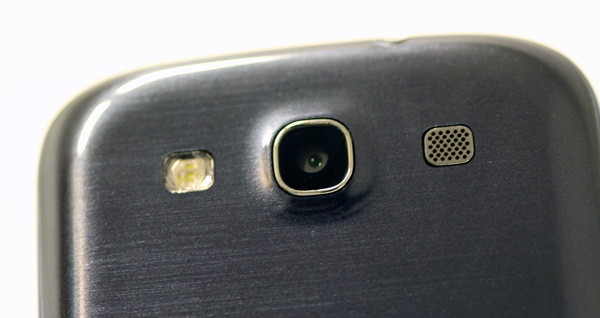
The front camera, with its 720p capability and 1.9-megapixel sensor, was surprisingly good. It’s good enough for self-portraits.
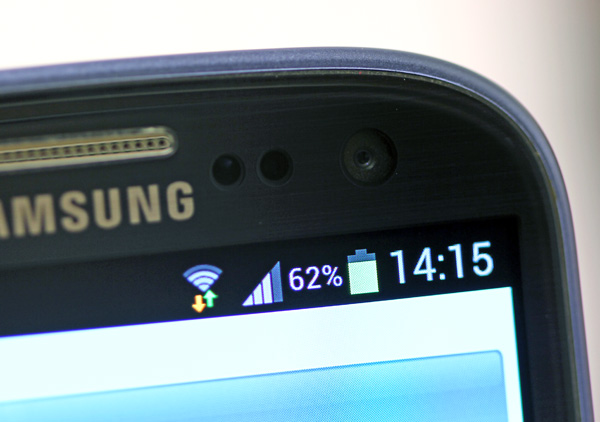
It’s tough to decide who has the best camera on the market at this moment, the One X and S III are very closely matched and you won’t go wrong with either. The Galaxy will deliver nice photos and videos and it should be enough for any phone camera power user. We also liked the camera UI, as it's pretty intuitive and streamlined compared to Samsung's previous efforts. Also, it just looks nice.
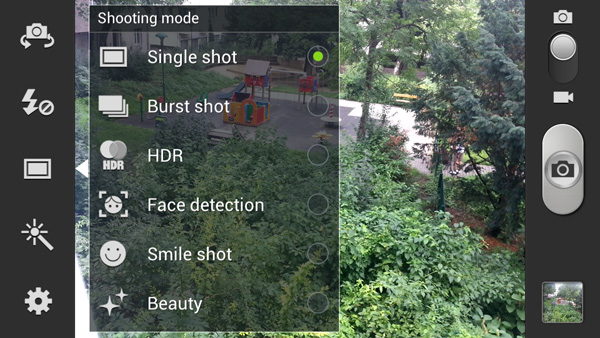
However, we are still talking about a phone camera, as and you can see in our sample photo, it struggles with dynamic range issues. This is true of all smartphone cameras and it is the result of cramming millions of sensors on an area the size of a grain of rice. HDR can help a bit, but phone cameras still have a long way to go.

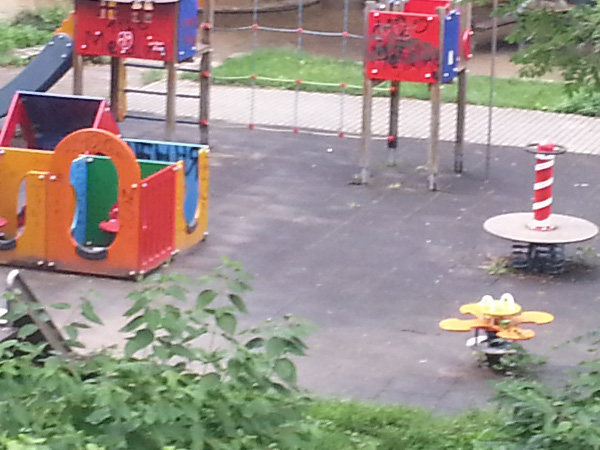
The 100-percent crop reveals quite a bit of post processing, resulting in soft edges and lack of detail. For all its technical prowess, the S III really does not impress in the camera department. Granted, it is not far behind the One X and it is roughly on par with the LG Optimus 4X, but we just feel Samsung could have and should have done better. The camera is not a major improvement over the S II and it will probably be overshadowed by the new iPhone 5.
Now then, we wanted to see how fast Samsung’s quad-core Exynos really is and how it stacks up against the competition, Qualcomm’s S4 dual-core and Nvidia’s Tegra 3 quad-core.
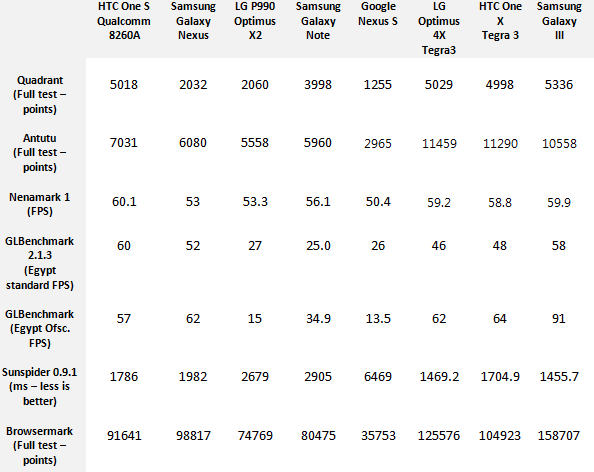
It turns out that Samsung is faster than any phone in Quadrant, but loses in Antutu quad-core enabled benchmark to both LG Optimus 4X and HTC One X, both Tegra 3 based phones. The phone maxes out Nemamark 1 and scores among the best one and in GL benchmark Egypt and off screen 720 rendering is s clear winner against Tegra 3 or Qualcomm S4. The phone is also the fastest we’ve seen so far in Sunspider and it scores significantly better than any other phone in Browsermark.
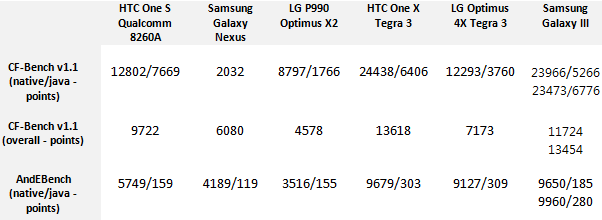
Nvidia has a slight advantage with HTC One X in CF benchmark as well as in AndEbenchmark and the two scores in these tests for SIII come from the hot and cold phone. It is clear that performance wise this is the faster phone so far. There is still one thing that we were pointed out by a veteran Samsung Galaxy S II user. There is a delay between pressing the dial key until you get to the dialer and it takes about a second longer than on the S II.
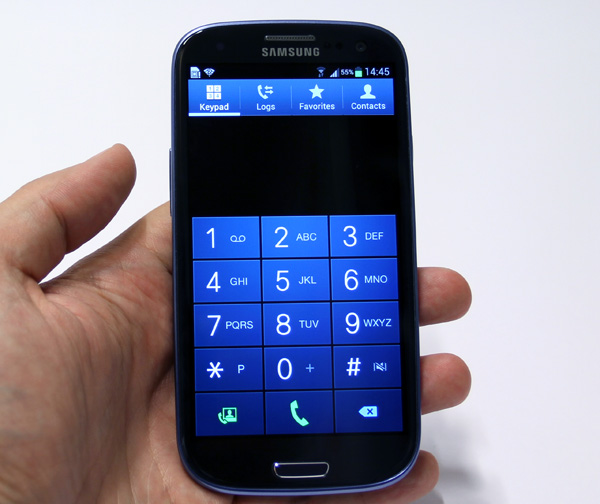
We tried it and saw for ourselves that this was the case, but we are sure that Samsung could fix this if it wants too. Some people might get annoyed that they will be able to get to dialer much faster on their old phone.
Conclusion
Samsung’s Galaxy S III is a worthy successor to the S II. It is an excellent and very fast phone that many will buy, but it’s not perfect. The plastic back cover feels way too cheap for a premium product and fingertip smudges will irk many people. The other issue is the display, and most people who had a chance to see it next to an HTC One X agree that HTC's SLCD is better. The camera also fails to impress, but the competition does not do a much better job, either.
Still, the S III comes with 50GB of Dropbox storage and it also has a microSD slot, replaceable battery, a surprisingly good front facing camera and best-in-class performance. Overall it’s a great phone with a few minor flaws. We just hope that Samsung will listen to reviewers and consumers and improve material quality, as even the Galaxy Nexus feels better than this much more expensive phone. It just doesn't come close to Apple or even HTC in terms of build quality and given the price there is really no justification for cheap plastics.
It’s a great phone and its runner up in the Android world is the HTC One X, if you are into the 4.7-inch or larger screens you won't go wrong with either. However, in the big scheme of things Samsung is going after Apple, not the Android alliance. The S III has what it takes to take on the dated iPhone 4S, but the iPhone 5 is just a few weeks away and the S III won’t have such an easy time competing with Apple’s all-new iPhone.
Sample supplied by Ditech.
